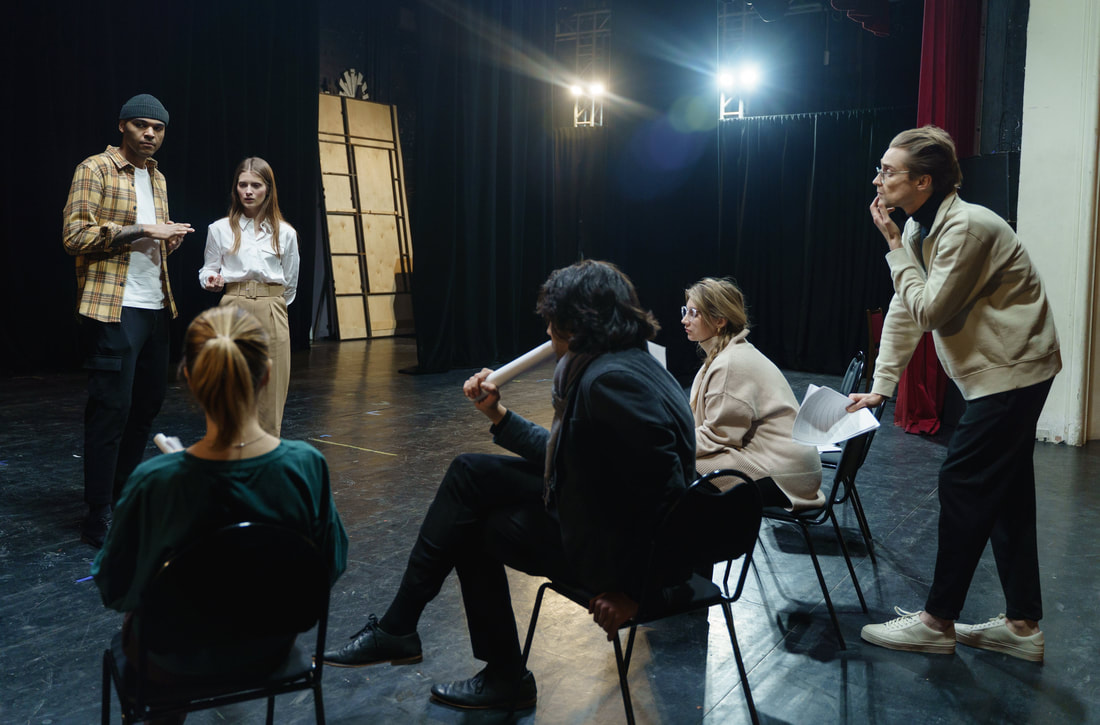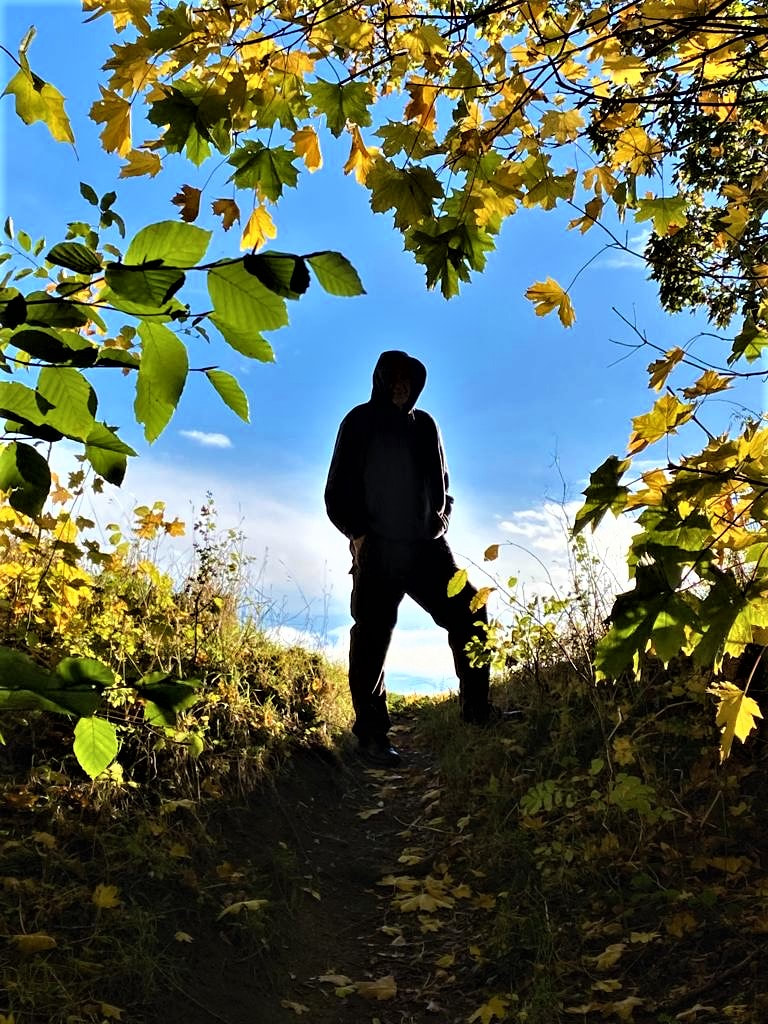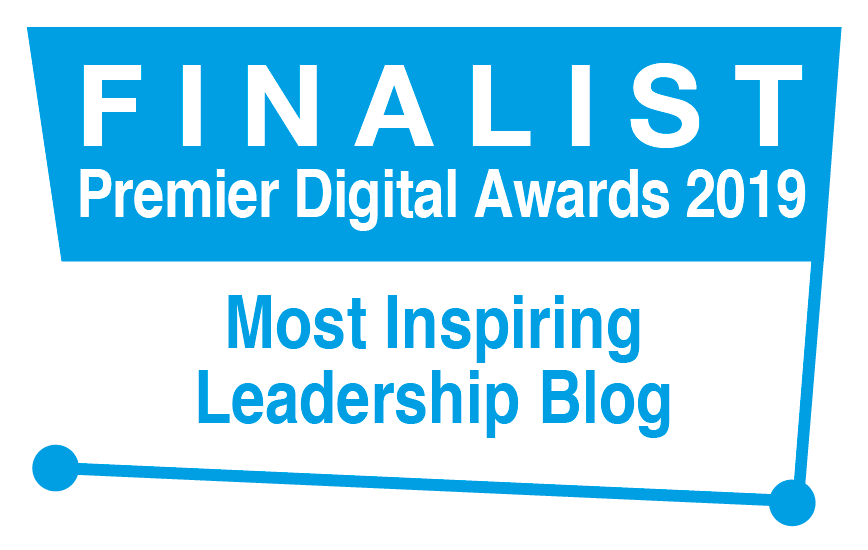|
‘Leadership is influence.’ (John C. Maxwell) It’s one thing to have insight. It’s another thing to exert influence on the basis of that insight. This is often a dilemma for leaders and professionals when seeking to influence change across dynamic, complex systems and relationships. After all, what if I can see something important, something that could make a significant difference, yet I can’t gain access to key decision-makers? Or what if, even if I can get access, they’re not willing to listen? What if people are so preoccupied by other issues that my message is drowned out by louder voices and I can’t achieve cut-through? Early in my career, I worked as OD lead in an international non-governmental organisation that was about to embark on radical change. I’d studied OD at university on a masters’ degree course and, based on that experience, could foresee critical risks in what the leadership was planning to do. I tried hard to get access to raise the red flags but, by the time I met with the leaders, it was too late. They had already fired the starting gun on their chosen programme. My concerns turned out to be well-founded, and the changes almost wrecked the organisation. I agonised for some time over why I’d been so ineffective at influencing their decisions. I learned some valuable lessons. Firstly, the view I held of my role – the contribution I could bring – was different to that of the leaders. I viewed myself as consultant whereas they viewed me as service provider. Secondly, the leaders had become so emotionally-invested in the change they had designed that they reacted defensively if challenged. They saw my well-meaning red flags as resistance rather than as a genuine desire to help. I would need to change my approach. Since then, I have practised building human-professional relationships with leaders and other stakeholders from the earliest opportunity. These relationships are built on two critical factors: firstly, respect for e.g. the studies, training, expertise and lived experience they bring to the table; and, secondly, empathy for e.g. the responsibilities, hopes, demands and expectations they face – both inside and outside of work. Against this backdrop, I’m able to pray, share my own insights and, where needed, advocate a change from an intention and base of support.
12 Comments
‘Learning is a treasure that will follow its owner everywhere.’ (Chinese proverb) Action Learning facilitator training with different participant groups always surfaces fresh and fascinating insights, emphases and challenges. This week’s ALA training programme was with a group of health professionals in diverse roles and fields of practice ranging from nursing, occupational therapy and podiatry to mental health, speech and language and education. I was inspired by their enthusiasm, personal ethics and genuine commitment to culture change. As we worked through Action Learning principles and techniques and how to enable groups to do it well, we explored 5 shift areas to facilitate a transition: from diagnosis to elicitation; from issue to person; from there-and-then to here-and-now; from first questions to follow-up questions; from reflection to agency. I’ll say a little about each of these dimensions with some practical examples below. The goal in each is to enhance participants’ learning and impact. From diagnosis to elicitation is a shift in who owns the issue from, say, ‘Tell me more about X so I can help you?’ to e.g. ‘What questions is X raising for you?’ From issue to person is a shift in focus from, say, ‘What’s the situation?’ to e.g. ‘What challenge is this situation posing for you?’ From there-and-then to here-and-now is a shift in temporal orientation from, say, ‘What have you tried?’ to e.g. ‘Given what you have tried, what stands out as the critical issue now?’ From first questions to follow-up questions is a shift in depth to move below and beyond, say, ‘How important is this to you?’ to e.g. ‘Given how important this is to you, what are you willing to risk?’ From reflection to agency represents a shift in traction from, say, ‘What sense are you making of this?’ to e.g. ‘What actions will you take to address this?’ A skill of the facilitator is to build the capacity of an Action Learning set to navigate these shifts in service of a presenter. ‘For me, revolution simply means radical change.’ (Aung San Suu Kyi) I heard a well-known pop psychologist on the radio this week, talking about his new book about how to make your New Year’s resolutions stick. He invited the listeners to buy his book in order to learn more. I didn’t do that, but it did bring to mind a number of things I’ve noticed over the years as I work with people, teams and organisations. I will share a couple of insights here that may be of interest and useful – and I promise not to ask you to buy anything. The first is how hard it can be to make significant and sustainable changes to habitual patterns of thought and-or behaviour. A wise friend, Ian Henderson, illustrates this simply by inviting people to fold their arms. Next, he invites them to fold their arms in the opposite direction. (I found this harder than I had imagined). He goes on to invite them to reflect on what routine they always use to dry themselves after a shower. We are creatures of habit. That’s OK when the routines serve us and-or others well. If, however, people become trapped in, for instance, patterns of tension or stress, if often demands more than fresh thinking, determined effort or will-power to change it. So, here’s the second. Try disrupting the physical context in which it takes place; for instance: meet in a different room or location; use different chairs; sit in different places to where you normally sit; stand up rather than sit down. I worked with a team that felt trapped in conflict. They invited me to help them work through it so I asked that we hold our first meeting where and at the time at which they normally met. When we did so, I asked them where they normally sit, including in relation to each other. (‘Exactly where we are now’). At the next meeting, I changed the time and, before participants arrived, rearranged the room completely, then invited them to sit somewhere different. The shift in group dynamics was remarkable. Disrupting the times and room configuration created enough of a change to enable the team to hold a different spirit, style and type of conversation. This, in turn, helped team members to relax enough to consider and create new possibilities. It released the stuck-ness and enabled a breakthrough of sorts that wouldn’t have been possible by thinking or talking alone. (Like this idea? Look out for my new book…) ‘Action Learning aims to shake you out of the cage of your current thinking.’ (Pedler & Boutall) Action Learning: a method by which someone receives stretching, coaching-type questions from a small group of peers. The aim is to resolve a pressing challenge, a real-life/work issue that has left the person perplexed or stuck. The idea is to leave with actions, practical steps that will help to move things forward. Yet what gets a person stuck in the first place? If it’s a complex challenge, such as that of navigating the intricacies of diverse human relationships, we may become inadvertently caged by our own assumptions. Gareth Morgan commented that ‘people have a knack for getting trapped in webs of their own creation.’ If we don’t know what assumptions we’re making, everything may seem self-evident to us. This is where Action Learning and coaching really can help. If we can engender a spirit of curiosity within ourselves and invite challenging questions from different others, we may discover a door emerging in our previously-unseen cage, experience the agency to push it wide open and step outside to embrace fresh possibilities. It could just change...everything. ‘When the winds of change blow hard enough, the most trivial of things can turn into deadly projectiles.’ (Despair.com) You’ve probably heard of change management. You’ve probably heard of change management teams too. You’ve probably heard of change plans, like project plans, sometimes expressed in Gannt charts with rows of scheduled tasks, mapped against proposed timeframes. You’re less likely, I would guess, to have heard of a transition plan. A transition plan deals with the human dimensions of change, the underlying psychological, emotional and relational issues that often prove critical to its success. Whilst change can often be planned and prepared for by agreeing desired outcomes, then working backwards to identify the practical steps needed to achieve them (a bit like working out the mechanical structure of a car engine in order to build one), transitions don’t work like that. A change process may be complex, in that there may be many interlinked moving parts, yet is in principle manageable. A transition process is dynamically-complex and, therefore, inherently unpredictable. This means that transitions can only be handled effectively by ongoing conversations with affected people. It calls for open and honest dialogue. It calls us to be invitational, curious and co-creative. It involves listening, hearing, being responsive and building trust. ‘If we were to do X…what would it mean for you?’ ‘Given what it would mean for you, what would you need?’ Well-led transitions will influence mood, climate, energy, engagement and agency: critical success factors in any change. ‘There’s nothing more dangerous than a resourceful idiot.’ (Scott Adams) 15 minutes before I was due to lead an online change leadership workshop in Germany, I stepped outside briefly for a breath of fresh air. I wanted to clear my head, focus and pray. Then…oh no, I heard a gentle click behind me and discovered, to my alarm, that I couldn’t open the door without a key. It hung tantalisingly on the inside and I could see my mobile phone staring at me blankly from the table. Aha, I thought. I will ask my hosts to let me in. Oh, they were out. Mild feelings of panic rising, I rushed to a neighbour. Thank God they were in, could understand my Englisch-Deutsch, had the hosts’ number and could call. Now, with just 2 minutes to go, my host appeared and saved the day. It was a timely reminder that sudden change can come from anywhere, unexpectedly and often from left field. It was also a helpful reminder that leadership, resilience and agency aren’t simply inward, intra-personal qualities or strengths. Our ability to handle the impacts of changes and transitions often emerges from an outward-facing resourcefulness, looking outside of ourselves openly (and, for me, prayerfully) for people and-or other resources who can co-create and co-enable a solution with us…or – if no solution is possible – sit with us in the midst of discomfort, disappointment or pain. ‘What is most important about any event is not what happens, but what it means.’ (Lee Bolman & Terrence Deal) Here’s one way to think about human change and transition: change is what happens around us and transition is what happens within us. Imagine, for instance, a change at work – ‘We used to do X and now we’re going to do Y instead.‘ Simple, right? It can be, yes…except when it isn’t. It all depends, at heart, on what that change will mean to a person, team or organisation, and-or what it could mean for others that matter to them too; e.g. colleagues, family, friends, people who use their services. It can get more complicated still. The same change could mean different things for different people and groups. It could also mean different things for the same person or group e.g. at different times, depending on what else is going on for them. In practice, this means that to support people through transitions, change leaders do well (a) to avoid making assumptions about what a change will mean and (b) to explore, ‘What will this change mean for you?’; then, given that, ‘What will you need?’ I can almost hear some leaders crying out in protest, ‘Don’t be naïve, Nick. Be realistic. People don’t like change. They’re resistant to change.’ Yet, here’s the thing. People will sometimes resist change, even though they agree with it, if they don’t feel heard or understood. Conversely and paradoxically, people will sometimes support change, even if they disagree with it, because they do feel heard and understood. Working with transitions isn’t an optional add-on. It can prove the key to success. ‘Without transition, a change is just a rearrangement of the furniture.’ (William Bridges) Lean forward and look into the room. Listen in carefully to the conversation. An organisation has decided to move to smaller and cheaper office premises in order to reduce its overheads. It will mean agile working: a shift to hybrid working, hot-desking and staff lockers. It appoints a change team to oversee the move, and the team notices a range of responses from staff, from passive apathy to active dissent. It faces a growing concern about what it perceives as resistance to change. It tries hard with corporate communications to let staff know what will happen when and yet is increasingly bemused and anxious about the apparent lack of buy-in. The team invites me in as an external organisation development (OD) consultant to have a conversation with staff, an open exploration of issues and how to move things forward. Here’s a glimpse and summary, following initial rapport-building and relational-contracting to ensure a felt-sense of safety and trust in the room:
The change team had focused on practical changes (physical-transactional: what happens around us) and inadvertently failed to pay attention to corresponding human transitions (psychological-emotional: what happens within us). Notice the flow of the consultant conversation: from feeling, to meaning, to need, to solution. The style is invitational, enhancing the felt-sense of choice, influence and agency. Baskets are provided. Staff re-engage. The move goes ahead smoothly. [See also: Change leadership principles; Organisations don't exist] ‘To lead real change, it’s not enough to think outside of the box. We need to think outside of the building.’ (Rosabeth Moss Kanter) Picture this. I’m in a coaching conversation with Anna, a client who feels stressed. She describes it as being like trapped inside a box, with no way out; where the box is her organisation, her job, the role she’s in now. The narrative she’s telling herself is that she has no possibility to escape from the debilitating pressure she’s experiencing. Her scope of authority to influence change is too constrained and she’s expected to deliver against targets that feel impossible. She feels totally helpless and hopeless. I acknowledge and empathise with how Anna is feeling, then ask if she’d be interested to explore potential options that could be available to her. At first, she pushes back, as if instinctively. ‘I don’t have any options – that is the problem’. I ask, inquisitively, to test the boundary a bit: ‘You could leave?’ ‘I can’t leave’, she replies, immediately and forcefully, ‘I have a mortgage to pay’. ‘So, the mortgage is part of the box?’, I ask. ‘Hmm. I guess it is’, she replies, more thoughtfully this time. ‘What if you weren’t to pay the mortgage?’, I ask. She looks bemused. ‘It would mean I’d lose the house, of course’, she snaps. ‘And, if you lost the house?’ ‘That would be terrible’, she replies, ‘It’s my dream home.’ ‘So, the dream home is, perhaps, part of the box?’ I ask. Anna goes quiet. After a while, she looks up and responds, ‘I don’t want to lose my home.’ ‘So: it’s as if, to keep your dream home, you feel that you have no option but to stay in your current job to pay your mortgage?’ ‘Yes.’ ‘Imagine now, for a moment, dismantling or breaking out of the box that you feel trapped in. If you were to imagine a spectrum of options, ranging from the status quo to what you might think of as a most extreme solution (the ‘nuclear option’), what might they be?’ Anna picks up a piece of paper and a pen and starts to write. ‘At the extreme end, I could sell the house and downsize to a cheaper house or location, then I could get try to get a less expensive mortgage, but I don’t want to do that.’ ‘At the other end, I could stay as I am and just accept that the frustration in my job is a price worth paying to keep the house that I love.’ ‘And..?’, I ask. ‘I guess I could apply for another job.’ ‘Say more?’ ‘Well, I could look at other jobs in my organisation.’ ‘Yet the organisation sounds like it may be part of the box too? What if you were to think outside of the box altogether?’ ‘True. I could look at job opportunities elsewhere, or even at a change of career that would feel more fun and fulfilling!’ ‘So, there are, perhaps, some options that could feel in tension for you? The house…or a career that could feel more fun and fulfilling? Which stands out as most important for you?’ ‘I hadn’t thought about it, but if I could find something I really love doing, I might just be willing to consider moving house to do it. Perhaps I’m allowing my attachment to the house to box me in.’ Suddenly, I see a lightbulb moment flash in her eyes. ‘Eeek…’ she says, ‘Perhaps the house is the box!’ Breakthrough. Anna has left the building. [See also: Boxes; Deconstructing the box; and Lateral instinct] ‘It’s not what you look at that matters, it’s what you see.’ (Henry David Thoreau) Psychologist Albert Ellis, widely regarded as the founding father of what has today evolved into Cognitive Behavioural Therapy, noticed that different people responded differently to what were, on the face of it, very similar situations. Previously, you might have heard, ‘Person X feels Y because Z happened’. It assumed a direct causal relationship between emotions and events. Ellis’ observations challenged this, proposing that something significant was missing in the equation. After all, if this assumption were true, we could expect that everyone should feel the same way in circumstance Z. Curious about this, Ellis concluded that the critical differentiating and influencing factor that lays between emotions and events is belief. It’s what we believe about the significance of an event that affects most how we feel in response to it. Here we have person A who hears news of a forthcoming redundancy with fear and trepidation. He believes it will have catastrophic financial consequences for himself and his family. Person B receives the news with positive excitement. She believes it will provide her with the opportunity she needs to pursue a new direction in her career. Drawing on this insight, organisational researchers Lee Bolman & Terrence Deal proposed that, in the workplace, what is most important may not be so much what happens per se, as what it means. The same change, for instance, could mean very different things to different people and groups, depending on the subconscious interpretive filters through which each perceives it. Such filters are created by a wide range of psychological, relational and cultural factors including: beliefs, values, experiences, hopes, fears and expectations. This begs an important question: how can we know? Hidden beliefs are often revealed implicitly in the language, metaphors and narratives that people use. To observe the latter in practice, notice who or what a person or group focuses their attention on and, conversely, who or what appears invisible to them. Listen carefully to how they construe a situation, themselves and others in relation to it. Inquire in a spirit of open exploration, ‘If we were to do X, what would it mean for you?’; ‘If we were to do X, what would you need?’ This is about listening, engagement and invitation. Attention to the human dimension can make all the difference. |
Nick WrightI'm a psychological coach, trainer and OD consultant. Curious to discover how can I help you? Get in touch! Like what you read? Simply enter your email address below to receive regular blog updates!
|













 RSS Feed
RSS Feed